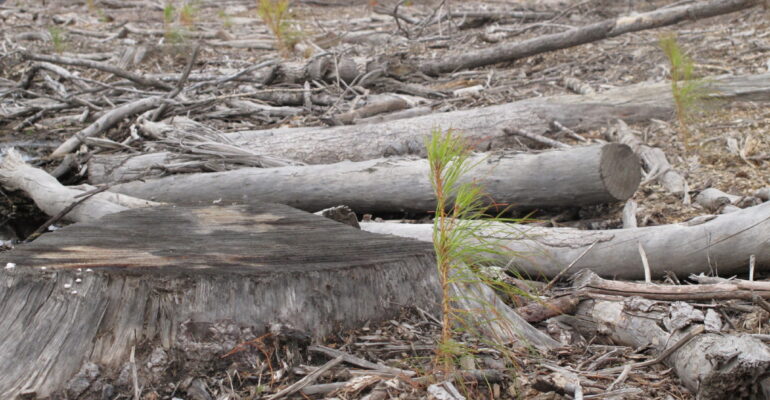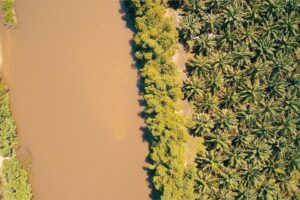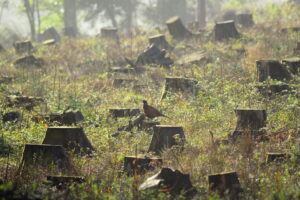Many trees, but few forests in the southern US
By Sini Eräjää, Policy Officer EU Bioenergy, Birdlife Europe and the European Environmental Bureau
“There are still some trees down here but there’s all the time less forests” said a shopkeeper in the town of Ahoskie in North Carolina. He was sitting in front of his shop while the smokestacks of a pellet mill owned by the company Enviva stood steaming behind him. The shopkeeper didn’t seem very enthusiastic about this newcomer in town.
Enviva’s pellet mill in the middle of Ahoskie city produces about 370,000 tons of pellets every year that go almost solely to Europe to be burned in power plants. Key destinations include the UK, Belgium and the Netherlands. Even if the mill’s smokestack can be seen from afar, closer to the mill the most shocking sights are the endless piles of logs – entire trees – surrounding the mill. The piles of trees to be passed forwards into a chipper, to be chipped, dried and turned into pellets.
 Enviva Ahoskie NC Pellet Mill
Enviva Ahoskie NC Pellet Mill
A closer look at these tree piles shows that they are mostly hardwood trees i.e., broadleaf species which make up the native forests in coastal areas of south eastern US. They are also the kinds of forests that are rapidly disappearing and being replaced by faster growing pine trees. A closer look at the piles also clearly shows that they are made out of whole sturdy tree trunks. Some of the trees might be hollow or of slightly lower wood quality, but also include perfectly good quality wood.
I’ve often heard energy utilities and pellet manufacturers like Enviva claiming that only residues, waste or low quality wood is used for their pellets. But standing in front of their pellet mill, all I can think is that I see an endless amount of whole trees, whole forests in front of me. What is even more disturbing is that the whole production of at least one other similar pellet mill would be needed to make even one power plant, such as the MaxGreen plant in Belgium, run in Europe.
[wpvideo TJca1mvS]
As we continue the investigation it turns out that not only do those piles of trees make up whole forests but that they’ve also once made up amazing, biodiversity rich wetland forests as we visit a clear cut that has supplied that particular pellet mill. The sight is devastating. Standing at the edge of the clearcut one can still see a strip of wetland with old tall cypress trees and other native species growing out of the watery bottom of the forest.
These are exactly the kinds of forests that are very special and particular to the south eastern US and that have also kept declining steadily due to never ending harvesting. These kinds of forests do not easily recover as clear cutting changes the water balance of a wetland completely. These kinds of forests cannot simply be replanted, a bit like how a tropical rainforest just can’t be replanted. As a matter of fact, “replanting” would likely rather mean converting the hardwood forest into a pine plantation.
 Wetland hardwood forest NC
Wetland hardwood forest NC
It’s difficult to imagine that this kind of clear cutting and forest management could be sustainably measured by any standards, but it’s particularly sad to see something like this happening because of European policies that were meant to tackle climate change.
This post is the second of a series of posts following Sini Eräjää, BirdLife Europe’s and the European Environmental Bureau’s bioenergy policy officer, during her trip to the US east coast to witness firsthand the impacts of Europe’s bioenergy policies on US forests and share lessons learned in Europe.
See Sini’s first post: A story unfolding, EU energy policy and American forests
Banner photo: Hardwood forest conversion (c) Sini Eräjää





